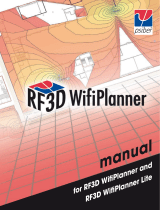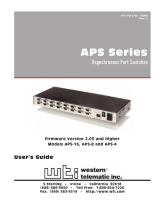
iv
3.3.1 Wireless Site Survey ...................................................................................................................23
3.3.2 Types of RF Interference ............................................................................................................23
3.3.3 Minimizing or Eliminating RF Interference ............................................................................... 24
3.3.4 Tools and Tasks ..........................................................................................................................24
Chapter 4: Wireless LAN Security 25
4.1 Security Goals and Strategies............................................................................................................. 25
4.2 Wired Equivalency Privacy................................................................................................................ 26
4.2.1 Authentication Modes ................................................................................................................26
4.2.2 Static WEP Encryption ...............................................................................................................26
4.2.3 Integrity ......................................................................................................................................27
4.2.4 Flaws with WEP Authentication and Encryption .......................................................................27
4.3 IEEE 802.11i (WPA and WPA2)....................................................................................................... 27
4.3.1 “802.11 Authentication” .............................................................................................................27
4.3.2 802.11i Authentication Options ..................................................................................................28
4.3.2.1 WPA-PSK and WPA2-PSK ...............................................................................................29
4.3.2.2 IEEE 802.1X ....................................................................................................................... 30
4.3.2.2.1 IEEE 802.1X Architecture........................................................................................... 30
4.3.2.2.2 Port-Based Access ....................................................................................................... 31
4.3.2.2.3 Communication Protocols............................................................................................ 32
4.3.2.3 EAP Methods ...................................................................................................................... 33
4.3.2.3.1 EAP-TLS ..................................................................................................................... 34
4.3.2.3.2 PEAPv0/EAP-MSCHAPv2 ......................................................................................... 35
4.3.3 802.11i Encryption and Data Integrity Options ......................................................................... 37
4.3.3.1 WPA ...................................................................................................................................38
4.3.3.1.1 TKIP............................................................................................................................. 38
4.3.3.1.2 Michael ........................................................................................................................ 39
4.3.3.2 WPA2 ................................................................................................................................. 39
4.3.3.2.1 CCMP .......................................................................................................................... 39
4.4 Security Trade-Offs............................................................................................................................ 39
Chapter 5: Rabbit Wi-Fi Configuration 41
5.1 Hardware and Software Requirements............................................................................................... 41
5.2 Configuration Macros and Default Conditions for Wi-Fi Rabbits..................................................... 41
5.2.1 TCP/IP Parameters ..................................................................................................................... 42
5.2.2 Wi-Fi Specific Parameters .......................................................................................................... 42
5.2.3 Security Configuration Macros ..................................................................................................44
5.3 Compile-Time Configuration............................................................................................................. 47
5.4 Runtime Configuration....................................................................................................................... 48
5.4.1 Wi-Fi Commands for ifconfig() .................................................................................................49
5.4.1.1 Basic Network Configuration .............................................................................................49
5.4.1.2 Network Performance .........................................................................................................49
5.4.1.3 Active Scanning .................................................................................................................. 50
5.4.1.4 Roaming ............................................................................................................................. 50
5.4.1.5 Transmit Power Options ..................................................................................................... 51
5.4.1.6 Regulatory Regions ............................................................................................................51
5.4.1.7 Data Rates ...........................................................................................................................52






















